Презентация presentation INGECON








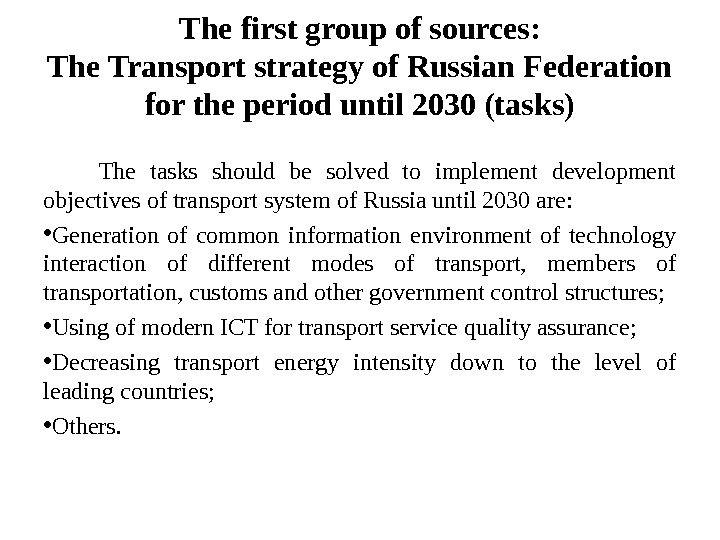
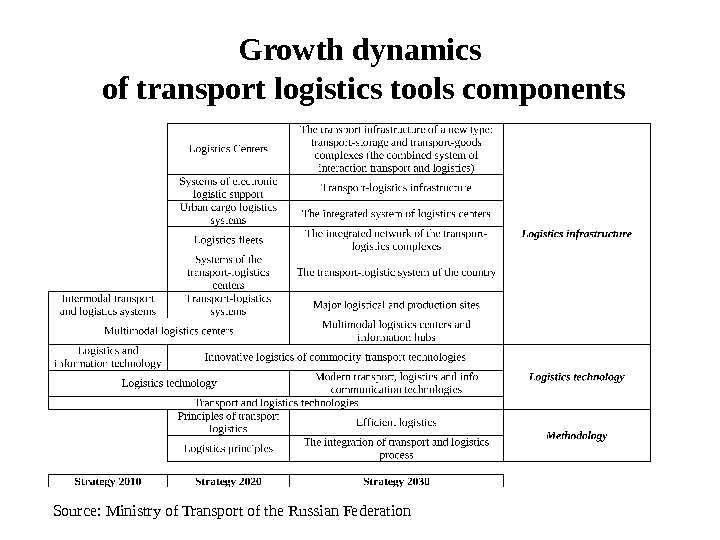

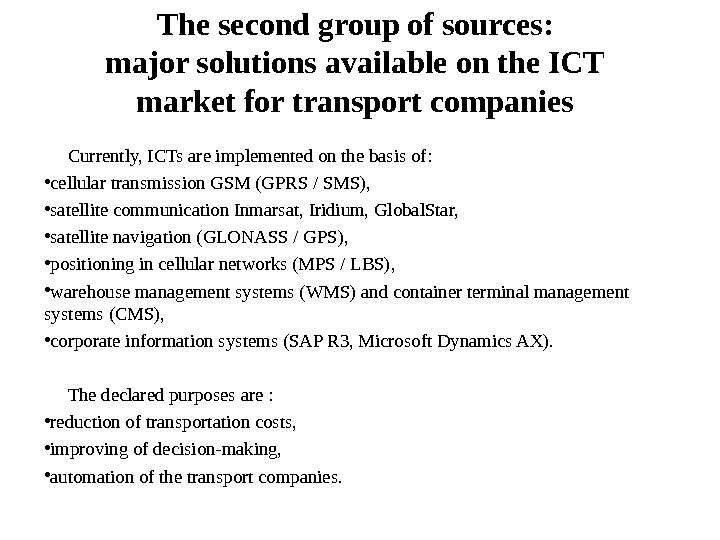


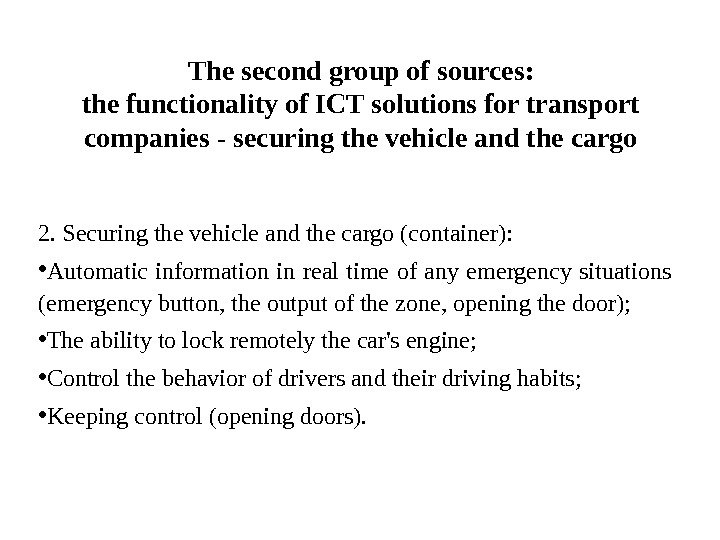


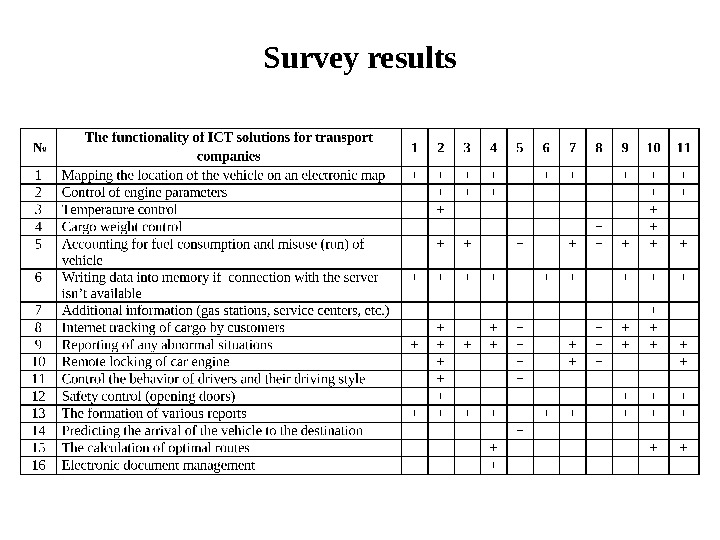












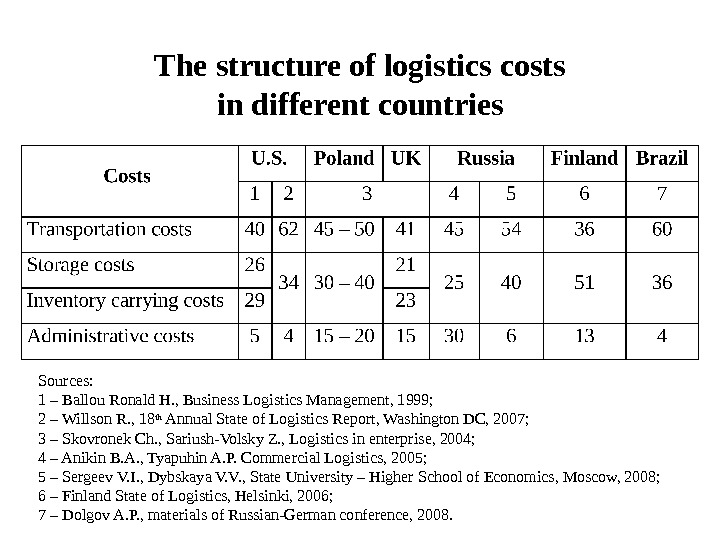






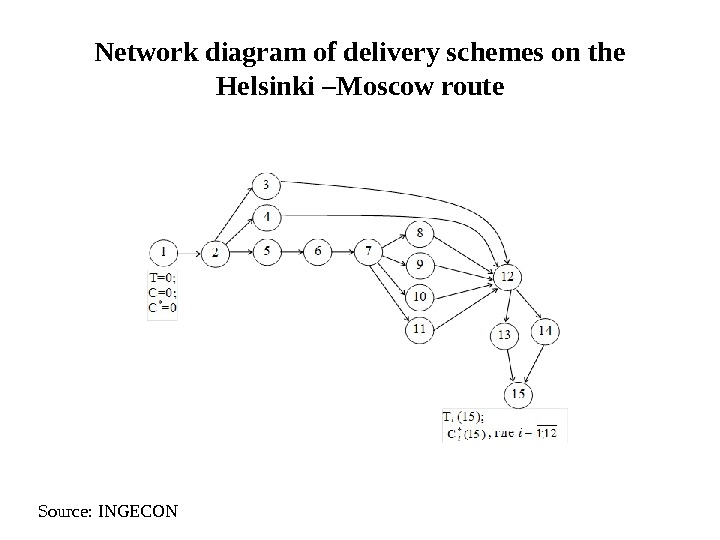








- Размер: 879 Кб
- Количество слайдов: 45
Описание презентации Презентация presentation INGECON по слайдам
 St. Petersburg State University of Engineering and Economics (Russia) ICT Best Practices for Sustainable Freight Transport and Logistics /Russia, Ukraine, Belarus/ Valery S. Lukinsky Vladislav V. Lukinsky Nina I. Fateeva
St. Petersburg State University of Engineering and Economics (Russia) ICT Best Practices for Sustainable Freight Transport and Logistics /Russia, Ukraine, Belarus/ Valery S. Lukinsky Vladislav V. Lukinsky Nina I. Fateeva
 Faculty of Logistics and Transport Department of Logistics and Transport Organization • 12 faculties • 28 000 students (including students at branches) • All forms of education (Bachelor’s programme, Master’s programme, specialty, post-graduate center, center for doctoral training) • Rating: one of the 10 best economic universities in Russia SAINT-PETERSBURG STATE UNIVERSITY OF ENGINEERING AND ECONOMICS • Lecturers – 32, including Doctors of Science – 8 • Students (total) – 900 • Post-graduate students – 40 • Candidates for a doctor’s degree – 4 • Candidates for a master’s degree – 30 • Candidates for a bachelor’s degree – 82 • New specialty (since 2011) – “Customs”
Faculty of Logistics and Transport Department of Logistics and Transport Organization • 12 faculties • 28 000 students (including students at branches) • All forms of education (Bachelor’s programme, Master’s programme, specialty, post-graduate center, center for doctoral training) • Rating: one of the 10 best economic universities in Russia SAINT-PETERSBURG STATE UNIVERSITY OF ENGINEERING AND ECONOMICS • Lecturers – 32, including Doctors of Science – 8 • Students (total) – 900 • Post-graduate students – 40 • Candidates for a doctor’s degree – 4 • Candidates for a master’s degree – 30 • Candidates for a bachelor’s degree – 82 • New specialty (since 2011) – “Customs”
 L 4 LIFE Framework: three dimensions of sustainability Source: VTT, Finland
L 4 LIFE Framework: three dimensions of sustainability Source: VTT, Finland
 L 4 LIFE Framework: ICT solutions side Source: VTT, Finland
L 4 LIFE Framework: ICT solutions side Source: VTT, Finland
 Research objectives Collection, organization and analysis of information on the use of ICT in the organization of freight transport (transport logistics). Sources of getting information about ICT solutions • First group: official sources. • Second group: all possible data published in a variety of information sources. • The third group: promising research and ideas in the form of problems, hypotheses, suggestions, propositions, etc.
Research objectives Collection, organization and analysis of information on the use of ICT in the organization of freight transport (transport logistics). Sources of getting information about ICT solutions • First group: official sources. • Second group: all possible data published in a variety of information sources. • The third group: promising research and ideas in the form of problems, hypotheses, suggestions, propositions, etc.
 The first group of sources: strategies, programs, laws • National and regional concepts; • Strategies and transport development programs. For example : • the Concept of customs clearance and customs control of goods in areas close to the state boundaries of Russian Federation; • Development strategy of rail transport in Russian Federation until 2030.
The first group of sources: strategies, programs, laws • National and regional concepts; • Strategies and transport development programs. For example : • the Concept of customs clearance and customs control of goods in areas close to the state boundaries of Russian Federation; • Development strategy of rail transport in Russian Federation until 2030.
 The first group of sources: The Transport strategy of Russian Federation for the period until 2030 (objectives) The Transport strategy of Russian Federation for the period until 2030 contains the following objectives (among others): • Decreasing the transport contribution to environmental pollution; • Decreasing energy intensity; • Innovative goods and transport technologies satisfying best world achievements; • Others.
The first group of sources: The Transport strategy of Russian Federation for the period until 2030 (objectives) The Transport strategy of Russian Federation for the period until 2030 contains the following objectives (among others): • Decreasing the transport contribution to environmental pollution; • Decreasing energy intensity; • Innovative goods and transport technologies satisfying best world achievements; • Others.
 The first group of sources: The Transport strategy of Russian Federation for the period until 2030 (tasks) The tasks should be solved to implement development objectives of transport system of Russia until 2030 are: • Generation of common information environment of technology interaction of different modes of transport, members of transportation, customs and other government control structures; • Using of modern ICT for transport service quality assurance; • Decreasing transport energy intensity down to the level of leading countries; • Others.
The first group of sources: The Transport strategy of Russian Federation for the period until 2030 (tasks) The tasks should be solved to implement development objectives of transport system of Russia until 2030 are: • Generation of common information environment of technology interaction of different modes of transport, members of transportation, customs and other government control structures; • Using of modern ICT for transport service quality assurance; • Decreasing transport energy intensity down to the level of leading countries; • Others.
 Growth dynamics of transport logistics tools components Source: Ministry of Transport of the Russian Federation
Growth dynamics of transport logistics tools components Source: Ministry of Transport of the Russian Federation
 The first group of sources: Technical regulation on safety of wheeled vehicles The document stipulates that the design of vehicles, used to transport passengers or dangerous goods, must provide a possibility for mounting of satellite navigation system GLONASS and GLONASS / GPS. Source: newspaper “Rossiiskaya Gazeta”, September,
The first group of sources: Technical regulation on safety of wheeled vehicles The document stipulates that the design of vehicles, used to transport passengers or dangerous goods, must provide a possibility for mounting of satellite navigation system GLONASS and GLONASS / GPS. Source: newspaper “Rossiiskaya Gazeta”, September,
 The second group of sources: major solutions available on the ICT market for transport companies Currently, ICTs are implemented on the basis of: • cellular transmission GSM (GPRS / SMS), • satellite communication Inmarsat, Iridium, Global. Star, • satellite navigation (GLONASS / GPS), • positioning in cellular networks (MPS / LBS), • warehouse management systems (WMS) and container terminal management systems (CMS), • corporate information systems (SAP R 3, Microsoft Dynamics AX). The declared purposes are : • r educ tion of transportation costs, • i mproving of decision-making, • automation of the transport companies.
The second group of sources: major solutions available on the ICT market for transport companies Currently, ICTs are implemented on the basis of: • cellular transmission GSM (GPRS / SMS), • satellite communication Inmarsat, Iridium, Global. Star, • satellite navigation (GLONASS / GPS), • positioning in cellular networks (MPS / LBS), • warehouse management systems (WMS) and container terminal management systems (CMS), • corporate information systems (SAP R 3, Microsoft Dynamics AX). The declared purposes are : • r educ tion of transportation costs, • i mproving of decision-making, • automation of the transport companies.
 The second group of sources: the functionality of ICT solutions for transport companies 1. Control of the location (speed and direction) and the condition of the car, cargo, container in real time. 2. Securing the vehicle and the cargo (container). 3. Analysis of the transport work performed.
The second group of sources: the functionality of ICT solutions for transport companies 1. Control of the location (speed and direction) and the condition of the car, cargo, container in real time. 2. Securing the vehicle and the cargo (container). 3. Analysis of the transport work performed.
 The second group of sources: the functionality of ICT solutions for transport companies — control of the location and the condition of moving objects 1. Control of the location (speed and direction) and the condition of the car, cargo, container in real time, including: • Mapping the location of moving objects on an electronic map; • Basic parameters of the engine (oil pressure, battery charge, fuel level, coolant temperature) and temperature in the car body (container) — the refrigerator; • Weight control of delivered goods; • Taking into account the fuel consumption up to 99% and misuse of vehicle (a reduction of up to 30% on fuel costs); • Writing data into memory if connection with the server is not available and automatic transfer of information when you log into the network; • Ability to obtain additional information (gas stations, service centers); • Ability for customers to keep track of their cargo status through the Internet.
The second group of sources: the functionality of ICT solutions for transport companies — control of the location and the condition of moving objects 1. Control of the location (speed and direction) and the condition of the car, cargo, container in real time, including: • Mapping the location of moving objects on an electronic map; • Basic parameters of the engine (oil pressure, battery charge, fuel level, coolant temperature) and temperature in the car body (container) — the refrigerator; • Weight control of delivered goods; • Taking into account the fuel consumption up to 99% and misuse of vehicle (a reduction of up to 30% on fuel costs); • Writing data into memory if connection with the server is not available and automatic transfer of information when you log into the network; • Ability to obtain additional information (gas stations, service centers); • Ability for customers to keep track of their cargo status through the Internet.
 The second group of sources: the functionality of ICT solutions for transport companies — securing the vehicle and the cargo 2. Securing the vehicle and the cargo (container): • Automatic information in real time of any emergency situations (emergency button, the output of the zone, opening the door); • The ability to lock remotely the car’s engine; • Control the behavior of drivers and their driving habits; • Keeping control (opening doors).
The second group of sources: the functionality of ICT solutions for transport companies — securing the vehicle and the cargo 2. Securing the vehicle and the cargo (container): • Automatic information in real time of any emergency situations (emergency button, the output of the zone, opening the door); • The ability to lock remotely the car’s engine; • Control the behavior of drivers and their driving habits; • Keeping control (opening doors).
 The second group of sources: the functionality of ICT solutions for transport companies — analysis of the transport work performed 3. Analysis of the transport work performed: • The formation of various reports (mileage vehicle, operating time, charging); • Forecasting the arrival of the vehicle to the destination; • Calculation of optimal routes; • Automate processing of shipping documents, electronic documents.
The second group of sources: the functionality of ICT solutions for transport companies — analysis of the transport work performed 3. Analysis of the transport work performed: • The formation of various reports (mileage vehicle, operating time, charging); • Forecasting the arrival of the vehicle to the destination; • Calculation of optimal routes; • Automate processing of shipping documents, electronic documents.
 Major developers / manufacturers / suppliers, offering a complete ICT solutions for transport companies: 1) SPF «GEYSER» 2) CJSC «Russian Navigation Technologies» 3) LLC «NTKF» Si-Nord» 4) Group of Companies «Scout» 5) LLC «Unicom Telematics» 6) JSC «Russian Space Systems» 7) LLC «ON Socrates» 8) LLC «Heaton» 9) Group of Companies «M 2 M telematics» 10) CJSC «ITS-Soft» 11) Unified National Movement Control System of Russia and others
Major developers / manufacturers / suppliers, offering a complete ICT solutions for transport companies: 1) SPF «GEYSER» 2) CJSC «Russian Navigation Technologies» 3) LLC «NTKF» Si-Nord» 4) Group of Companies «Scout» 5) LLC «Unicom Telematics» 6) JSC «Russian Space Systems» 7) LLC «ON Socrates» 8) LLC «Heaton» 9) Group of Companies «M 2 M telematics» 10) CJSC «ITS-Soft» 11) Unified National Movement Control System of Russia and others
 Survey results
Survey results


 Major solutions on the ICT market, used by transport companies (information is presented without the company names)
Major solutions on the ICT market, used by transport companies (information is presented without the company names)
 Note to the previous table Some transport companies (3, 4, 7, 10, 25 trucks) do not use ICT for different reasons (customers are not ready for the additional costs; while we monitor the market of ICT for over 5 years, to sidestep unprofitability proposals are being rejected; in case of transportation of more than three SKUs, preliminary informing of customs does not work (only through a broker in customs office)).
Note to the previous table Some transport companies (3, 4, 7, 10, 25 trucks) do not use ICT for different reasons (customers are not ready for the additional costs; while we monitor the market of ICT for over 5 years, to sidestep unprofitability proposals are being rejected; in case of transportation of more than three SKUs, preliminary informing of customs does not work (only through a broker in customs office)).


 The results of the use of ICT by transport companies 1) Mapping the location of the vehicle on an electronic map (solution number 1) gives a reduction in the number and duration of the conversations by the mobile, thus reducing transportation costs and increasing safety (the driver is not distracted while driving); 2) Allowance for fuel consumption (solution number 5) gives a reduction in average fuel consumption (due to control of filling and plums in real time); 3) Online tracking of cargo by customers (solution number 8 ) allows receiving information in the office of the transport company directly through the transport m anager; 4) Electronic document management (solution number 16) allows the company to introduce a program to monitor the traffic that is integrated with accounting (from receipt of the request for transportation prior to payment for work performed). “ Actually the container from St. Petersburg to Moscow moves during one day, but participants of the carriage exchange paper documents for 5 -6 days” says Boris Kunin, general director of “Trans Telecom Business”.
The results of the use of ICT by transport companies 1) Mapping the location of the vehicle on an electronic map (solution number 1) gives a reduction in the number and duration of the conversations by the mobile, thus reducing transportation costs and increasing safety (the driver is not distracted while driving); 2) Allowance for fuel consumption (solution number 5) gives a reduction in average fuel consumption (due to control of filling and plums in real time); 3) Online tracking of cargo by customers (solution number 8 ) allows receiving information in the office of the transport company directly through the transport m anager; 4) Electronic document management (solution number 16) allows the company to introduce a program to monitor the traffic that is integrated with accounting (from receipt of the request for transportation prior to payment for work performed). “ Actually the container from St. Petersburg to Moscow moves during one day, but participants of the carriage exchange paper documents for 5 -6 days” says Boris Kunin, general director of “Trans Telecom Business”.
 An example № 1 of the use of ICT while carrying out international transport
An example № 1 of the use of ICT while carrying out international transport
 An example № 2 of the use of ICT while carrying out international transport
An example № 2 of the use of ICT while carrying out international transport
 The third group of sources: proposals of the working group of the INGECON 1) Unification of documents on the basis of electronic data carriers (electronic portfolio of documents accompanying the implementation of international transportation). We offer to distinguish three data carriers: • for driver it has to contain passport data with visas, driver’s license, data on the mode of work and rest, an ADR certificate, personal information (e. g. , blood type), etc. ; • for the vehicle it has to contain the vehicle registration certificate, travel permit, certificate of serviceability, insurance, and others; • for goods it has to contain invoice CMR, TIR carnet, invoice, the certificate of origin.
The third group of sources: proposals of the working group of the INGECON 1) Unification of documents on the basis of electronic data carriers (electronic portfolio of documents accompanying the implementation of international transportation). We offer to distinguish three data carriers: • for driver it has to contain passport data with visas, driver’s license, data on the mode of work and rest, an ADR certificate, personal information (e. g. , blood type), etc. ; • for the vehicle it has to contain the vehicle registration certificate, travel permit, certificate of serviceability, insurance, and others; • for goods it has to contain invoice CMR, TIR carnet, invoice, the certificate of origin.
 The consequences of the transition to paperless data carriers at three levels First level: transport companies • Reduce of complexity of obtaining permits and the return, the risk of loss, damage, incomplete filling of the permit forms Second level: the state (for example, Russia or Finland) • Reduce of labor costs for the distribution system of permits and monitoring the correctness of their use (including authentication forms) Third level: Interstate • The number of permits, which receives the RF Transport Ministry from foreign countries, is about one million forms per year ; • States are free to determine what information (and in which language) should be on the permit. Often there are delays in the start of the year with an exchange of forms between two countries; • The transition to paperless data carriers will standardize forms of permits, significantly simplify the procedure for their exchange and use; • Technical upgrades necessary for the transition can be a platform for the transfer of all transport documents in a single information space; • A separate study has to be carried out to determine the effect of implementing the proposed measures.
The consequences of the transition to paperless data carriers at three levels First level: transport companies • Reduce of complexity of obtaining permits and the return, the risk of loss, damage, incomplete filling of the permit forms Second level: the state (for example, Russia or Finland) • Reduce of labor costs for the distribution system of permits and monitoring the correctness of their use (including authentication forms) Third level: Interstate • The number of permits, which receives the RF Transport Ministry from foreign countries, is about one million forms per year ; • States are free to determine what information (and in which language) should be on the permit. Often there are delays in the start of the year with an exchange of forms between two countries; • The transition to paperless data carriers will standardize forms of permits, significantly simplify the procedure for their exchange and use; • Technical upgrades necessary for the transition can be a platform for the transfer of all transport documents in a single information space; • A separate study has to be carried out to determine the effect of implementing the proposed measures.
 The third group of sources: proposals of the working group of the INGECON 2. Electronic directory of international road transportation • It allows providing the driver in his native language information in real-time about traffic characteristics, the nearest car parks, etc. , as well as options for its behavior in extreme situations (road accidents, truck breakdown, a police check). 3. The development of scientific base for evaluation of the effectiveness of ICT in transport logistics • «Now all the members of transport process have a lot of data, but they are very difficult for understanding. Each mode of transport is developing on its own, and movement toward consolidation is very slow”, says Vladimir Voronin, vice general director of “NIIAS”.
The third group of sources: proposals of the working group of the INGECON 2. Electronic directory of international road transportation • It allows providing the driver in his native language information in real-time about traffic characteristics, the nearest car parks, etc. , as well as options for its behavior in extreme situations (road accidents, truck breakdown, a police check). 3. The development of scientific base for evaluation of the effectiveness of ICT in transport logistics • «Now all the members of transport process have a lot of data, but they are very difficult for understanding. Each mode of transport is developing on its own, and movement toward consolidation is very slow”, says Vladimir Voronin, vice general director of “NIIAS”.
 The structure of logistics costs in different countries Sources: 1 – Ballou Ronald H. , Business Logistics Management, 1999; 2 – Willson R. , 18 th Annual State of Logistics Report, Washington DC, 2007; 3 – Skovronek Ch. , Sariush-Volsky Z. , Logistics in enterprise, 2004; 4 – Anikin B. A. , Tyapuhin A. P. Commercial Logistics, 2005; 5 – Sergeev V. I. , Dybskaya V. V. , State University – Higher School of Economics, Moscow, 2008; 6 – Finland State of Logistics, Helsinki, 2006; 7 – Dolgov A. P. , materials of Russian-German conference, 2008.
The structure of logistics costs in different countries Sources: 1 – Ballou Ronald H. , Business Logistics Management, 1999; 2 – Willson R. , 18 th Annual State of Logistics Report, Washington DC, 2007; 3 – Skovronek Ch. , Sariush-Volsky Z. , Logistics in enterprise, 2004; 4 – Anikin B. A. , Tyapuhin A. P. Commercial Logistics, 2005; 5 – Sergeev V. I. , Dybskaya V. V. , State University – Higher School of Economics, Moscow, 2008; 6 – Finland State of Logistics, Helsinki, 2006; 7 – Dolgov A. P. , materials of Russian-German conference, 2008.
 Research interest ranking of topics* * Compiled from data published by D. J. Bowersox and D. J. Closs with reference to the Center for World Studies, University of Michigan; ** Europe, North America, the Pacific region.
Research interest ranking of topics* * Compiled from data published by D. J. Bowersox and D. J. Closs with reference to the Center for World Studies, University of Michigan; ** Europe, North America, the Pacific region.
 Needs of the logistics sector development (Turku School of Economics, project “Log. On. Baltic”)
Needs of the logistics sector development (Turku School of Economics, project “Log. On. Baltic”)
 Structure diagram of the causes and results (Ishikawa diagram)
Structure diagram of the causes and results (Ishikawa diagram)
 Cause-and-effect diagram of impact of ICT solutions on sustainability Source: VTT, Finland INGECON, Russia
Cause-and-effect diagram of impact of ICT solutions on sustainability Source: VTT, Finland INGECON, Russia
 Algorithm for designing a cargo’s delivery system Source: INGECON
Algorithm for designing a cargo’s delivery system Source: INGECON
 The choice of delivery options in multimodal traffic on the network schedule Brief description of the delivery options Helsinki – Moscow routes Source: INGECON
The choice of delivery options in multimodal traffic on the network schedule Brief description of the delivery options Helsinki – Moscow routes Source: INGECON
 Network diagram of delivery schemes on the Helsinki –Moscow route Source: INGECON
Network diagram of delivery schemes on the Helsinki –Moscow route Source: INGECON
 Works to deliver goods on the route Helsinki – Moscow Source: INGECON
Works to deliver goods on the route Helsinki – Moscow Source: INGECON
 Reflection of ICT in the key logistics activities indicators (KPI) * Sergeev V. I. , Corporative logistics, 2004; ** Information and communication reliability, accuracy and timeliness; *** Use of investments in information system;
Reflection of ICT in the key logistics activities indicators (KPI) * Sergeev V. I. , Corporative logistics, 2004; ** Information and communication reliability, accuracy and timeliness; *** Use of investments in information system;
 Key indicators of road transport enterprise Source: Rudnik D. , Voskoboynikov U. , Korolyov V. , magazine «The conjuncture of commodity markets. Marketing & Logistics“, № 1,
Key indicators of road transport enterprise Source: Rudnik D. , Voskoboynikov U. , Korolyov V. , magazine «The conjuncture of commodity markets. Marketing & Logistics“, № 1,
 Key indicators of road transport enterprise: continuation Source: Rudnik D. , Voskoboynikov U. , Korolyov V. , magazine «The conjuncture of commodity markets. Marketing & Logistics“, № 1,
Key indicators of road transport enterprise: continuation Source: Rudnik D. , Voskoboynikov U. , Korolyov V. , magazine «The conjuncture of commodity markets. Marketing & Logistics“, № 1,
 Logistics performance indicators (international shipping)
Logistics performance indicators (international shipping)
 Formation of the decision-making model on the use of ICT
Formation of the decision-making model on the use of ICT
 Conclusions 1. Improve the accounting in order to highlight the costs associated with ICT operations (functions). 2. Develop a methodology for assessing the impact of ICT solutions on total logistical costs. 3. Develop a methodology for evaluating the use of investments in logistics infrastructure (transport logistics).
Conclusions 1. Improve the accounting in order to highlight the costs associated with ICT operations (functions). 2. Develop a methodology for assessing the impact of ICT solutions on total logistical costs. 3. Develop a methodology for evaluating the use of investments in logistics infrastructure (transport logistics).
 Thank you!
Thank you!

